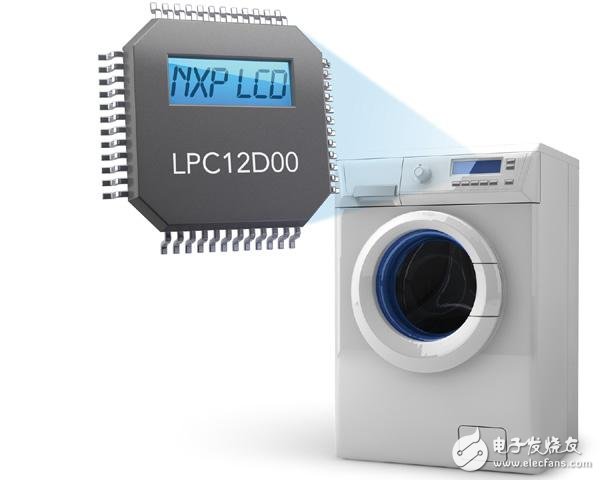What if your washing machine can detect the type of laundry and automatically adjust the settings? Recently, NXP Semiconductors (NXP) exhibited its smart washing machine demonstration model for the first time in Beijing, which is the intelligent user interface of NXP's best RFID/NFC, power management IC, 32-bit MCU and TRIACS solution, capacitive touch and LCD screen. , discrete devices, and other green smart appliance design applications, including power metering, temperature sensors, I2C buffers, general-purpose IO (GPIO) expanders and other complex subsystems.
Mei Runping, global senior sales director of NXP's semiconductor appliance application market, stressed that it is the first time in the semiconductor industry to achieve such a broad product portfolio in a home appliance. “The trend of intelligentization of household appliances is increasing day by day, but our exploration of the possibilities of two-way communication has just begun.†Mei Runping said, “In the future, functions such as NFC will become an essential function for mobile phones, computers and other terminal products, so just add With the supporting application software, NFC and other technologies can be promoted on home appliances, and intelligent interoperability between smart terminals and home appliances will be easily realized."
The most striking feature of this demonstration is the Fabric and Detergent RecogniTIon function: the washing machine can read information such as fabric type and color from buttons with built-in RFID tags to help avoid mixing white and black clothing. Washing and optimizing the washing process based on the characteristics of the laundry and detergent being read; another great feature is its NFC-based maintenance function: the authorized maintenance technician can use the NFC-enabled mobile phone to be smart The washing machine performs remote diagnosis, changes its working status, and starts related applications that can communicate directly with the designated service center.

According to the data provided by NXP, currently, the top 10 major home appliance companies in the world account for about 55% of the market. It is estimated that by 2015, the demand for semiconductor products will increase by 15% per year, and the quota will reach 2 billion US dollars; while the small household appliances market is very scattered, the top 10 small household appliance manufacturers can only occupy less than 40%. Share, profits are more from some high-end applications, such as espresso machines. To this end, NXP has also adjusted the organizational structure to form a vertical application department represented by AEA (Appliance/Energy/AutomaTIon) to meet the opportunities and challenges brought by The Internet of Things. .
In addition to fabric fiber inspection and NFC functions, the user interface and system management for complex washing programs, the demonstration model also uses the 32-bit microcontroller LPC1227 based on the ARM Cortex-M0 platform. Mei Runping said that RFID and NFC technology extends to the field of home appliances. Smart washing machines with this function can provide a variety of settings for different temperatures, cycles and fibers, all of which will be controlled by a single board.
According to NXP, the LPC1227 code density is increased by about 50% compared to the traditional 8-bit MCU. The internal RC oscillator with 1% accuracy can drive high-current GPIO, deterministic partitioning algorithm in ROM, and has passed IEC 60730 security. Standard certification. As part of the demonstration session, NXP also demonstrated how the LPC1227 can be used directly to drive the highly immune-resistant TRIAC BTA316 and ACT108 without any additional drive solution.
Other demonstration highlights include: 1. Efficient GreenChip TEA1721 switching power supply controller IC with integrated MOSFETs that consume less than 10 mW in standby mode. The system can wake up quickly from standby mode and return to full operation; 2. Intelligent washing machine can effectively monitor and display its own power consumption, and transmit power consumption data to relevant service center or power supplier remotely; 3. Pass IEEE 802.15 .4 wireless communication with smart meters or energy gateways. This smart washing machine demo model uses FCC and ETS standard modules with built-in ultra-low power JN5148 wireless controller. The module supports a wide range of protocol stacks, including ZigBee PRO smart energy and residential automation, JenNet-IP (6LoWPAN) and RF4CE remote control.
Terminal Block Din Rail,Spring Grounding Terminal Block,Pe Grounding Terminal Block,Plastic Terminal Blocks
Wonke Electric CO.,Ltd. , https://www.wkdq-electric.com